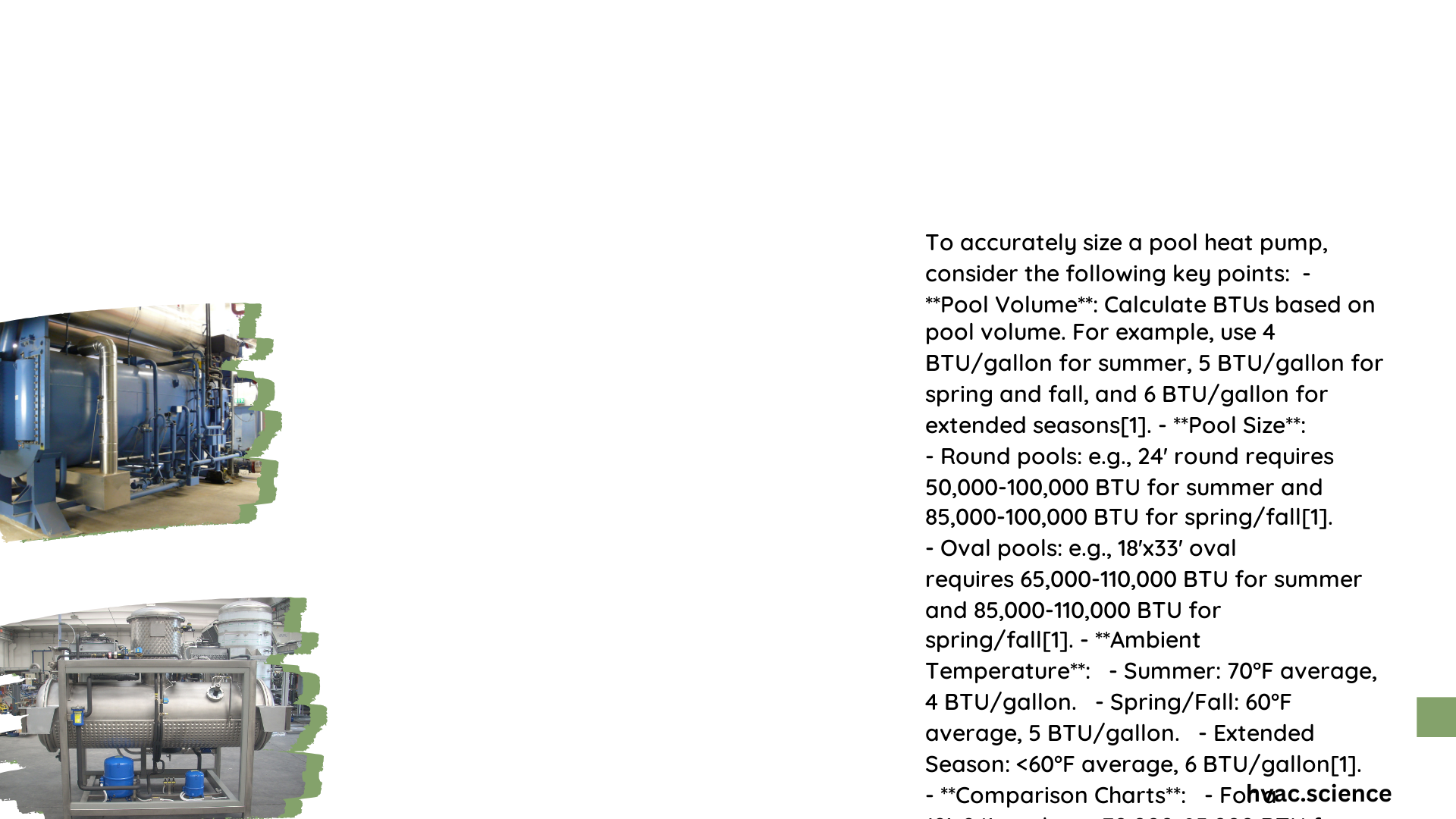Selecting the right pool heat pump is crucial for maintaining optimal water temperature while maximizing energy efficiency. The pool heat pump sizing tool helps pool owners determine the precise heating capacity needed by analyzing critical factors like pool volume, surface area, ambient temperature, and desired temperature rise. This comprehensive guide provides step-by-step methods to calculate the perfect heat pump size, ensuring comfortable swimming conditions and cost-effective energy consumption.
What Factors Determine Pool Heat Pump Size?
How to Calculate Pool Volume Accurately?
Pool volume is the foundational measurement for heat pump sizing. Use this precise calculation method:
- Measure Pool Dimensions
- Length
- Width
-
Average depth
-
Volume Calculation Formula
[ \text{Volume} = \text{Length} \times \text{Width} \times \text{Average Depth} ]
Example Calculation:
– Length: 7 meters
– Width: 3 meters
– Average Depth: 1.3 meters
[ 7 \, \text{m} \times 3 \, \text{m} \times 1.3 \, \text{m} = 27.3 \, \text{cubic meters} ]
[ 27.3 \, \text{cubic meters} \times 1000 \, \text{litres/cubic meter} = 27,300 \, \text{litres} ]
What Are the Key Conversion Methods?
kW Requirement Estimation
A standard conversion method involves dividing pool volume by 2,500:
[ \text{kW} = \frac{\text{Pool Volume in litres}}{2500} ]
Practical Example:
[ \text{kW} = \frac{27,300 \, \text{litres}}{2500} = 10.92 \, \text{kW} ]
BTU Calculation Method
For more precise measurements, use the BTU calculation:
[ \text{BTU/hr} = \text{Pool Surface Area (sq ft)} \times \text{Temperature Rise (°F)} \times 11 ]
How Do Environmental Factors Impact Sizing?
Several critical environmental factors influence heat pump sizing:
| Factor | Impact on Sizing |
|---|---|
| Wind Speed | Increases heat loss |
| Humidity | Affects heat transfer efficiency |
| Shade | Reduces ambient temperature |
| Night Temperatures | Determines heating requirements |
What Are Efficiency Considerations?
- Coefficient of Performance (COP)
- Higher COP indicates better energy efficiency
-
Typically ranges between 3.0 to 6.0
-
Heat Retention Strategies
- Pool covers can reduce heat loss by up to 80%
- Proper insulation minimizes energy consumption
How to Choose the Right Heat Pump Size?
Recommended Sizing Guidelines:
– Small Pools (up to 15,000 litres): 8-12 kW
– Medium Pools (15,000-30,000 litres): 12-18 kW
– Large Pools (30,000-50,000 litres): 18-36 kW
Pro Tips for Accurate Sizing
- Always round up heat pump capacity
- Consider future usage and potential pool expansions
- Consult professional pool heating specialists
- Use online heat pump sizing calculators for preliminary estimates
Common Mistakes to Avoid
- Underestimating temperature rise requirements
- Ignoring local climate conditions
- Neglecting pool cover impact
- Choosing based solely on price
Final Recommendations

Utilize a comprehensive pool heat pump sizing tool that considers:
– Precise pool volume measurements
– Local climate data
– Desired temperature range
– Energy efficiency ratings
Pro Tip: Invest time in accurate measurements to ensure optimal heat pump performance and long-term energy savings.
